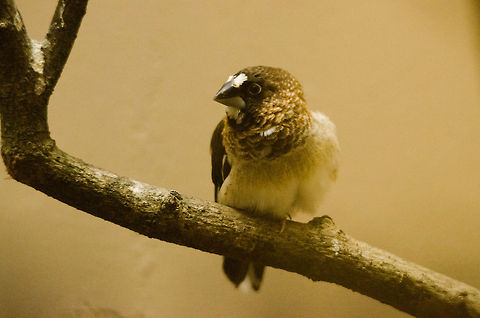
Behavior
Society Finches have been used extensively in research on imprinting and on bird vocalizations, often comparing the structure of their songs to syntax.References:
Some text fragments are auto parsed from Wikipedia.


Some text fragments are auto parsed from Wikipedia.
| Status: Unknown | ||||||
|---|---|---|---|---|---|---|
| EX | EW | CR | EN | VU | NT | LC |
| Taxonomy | |
|---|---|
| Kingdom | Animalia |
| Division | Chordata |
| Class | Aves |
| Order | Passeriformes |
| Family | Estrildidae |
| Genus | Lonchura |
| Species | L. striata |
| Photographed in |
|---|
|
|